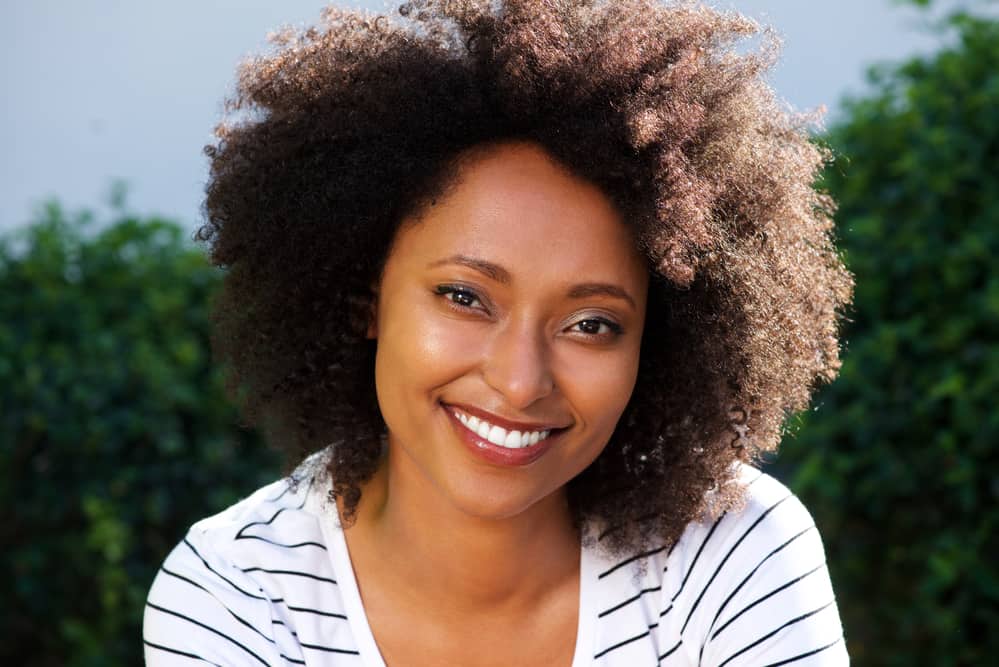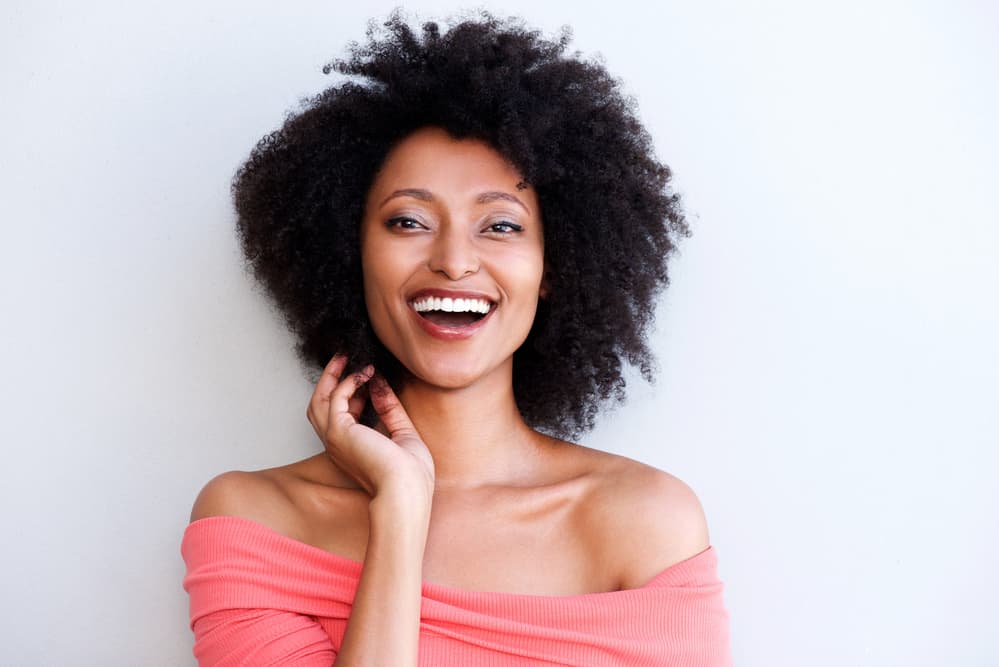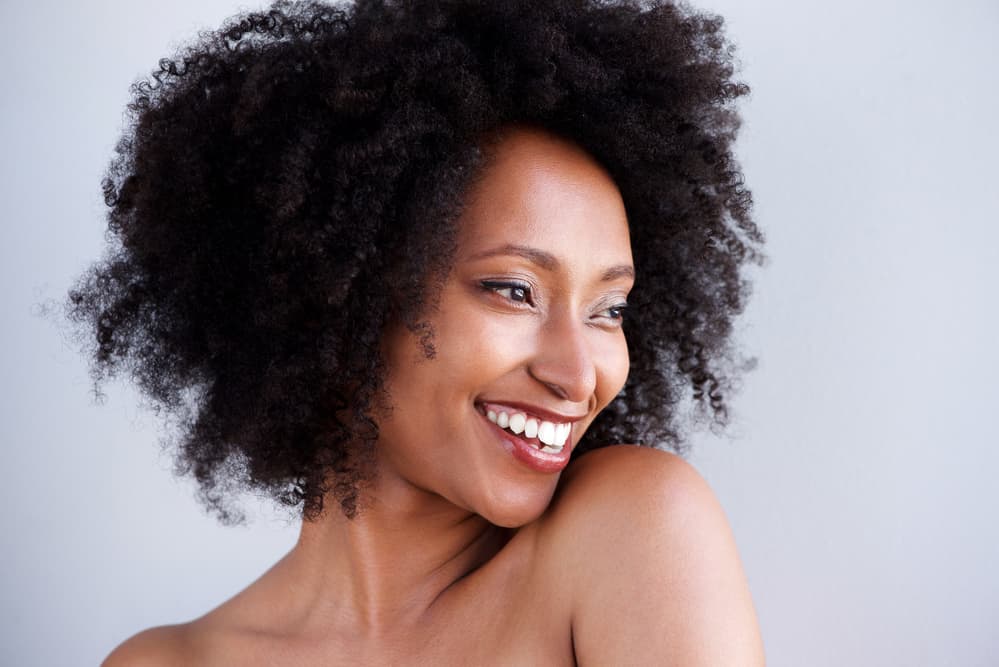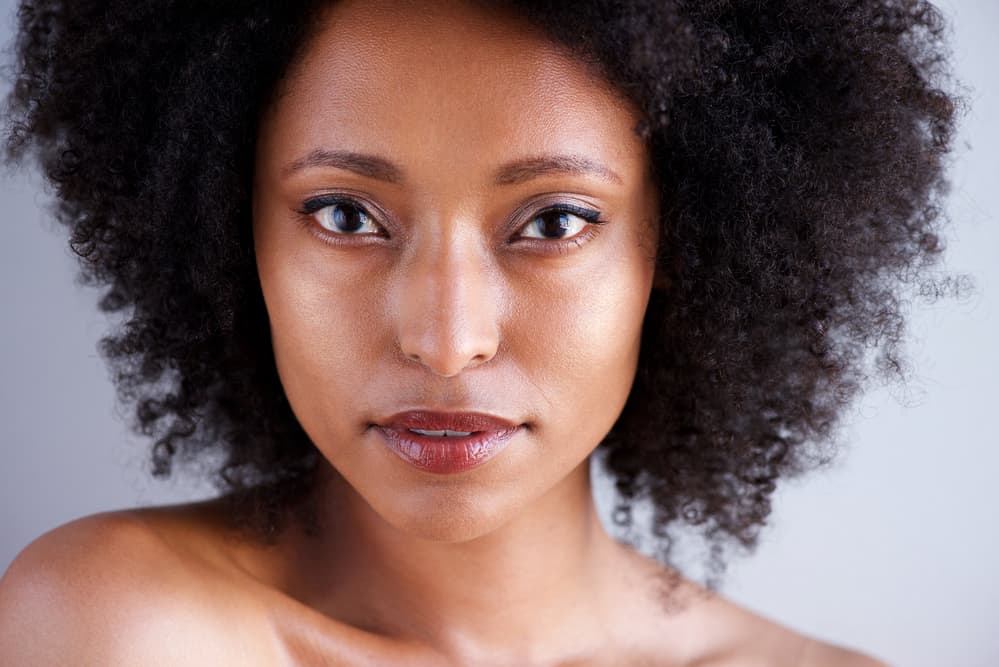
There’s something truly mesmerizing about deep, sultry black hair. With just a glance, it stops onlookers in their tracks.
Chances are you’ve seen gorgeous shiny black hair on others and wondered if it grew in like that. In this article, we’ll tell you for sure whether people grow naturally black hair.
Table of Contents
Is Black a Natural Hair Color?

Black is not a natural hair color. You read that right. If you don’t believe it, allow us to explain. The natural color of our hair strands is a product of two main types of melanin: eumelanin and pheomelanin.
Eumelanin gives off brown or black pigments, while pheomelanin gives off lighter tones. The more eumelanin that’s present in someone’s hair, the darker it will appear. Some people have so much eumelanin in their hair that it may look black.
Being that hair contains varying levels of both pheomelanin and eumelanin; no one has 100% black hair pigments. What seems like black hair is really dark brown hair.
You can test this theory by looking at naturally “black” hair in the sunlight. When you do so, you’ll notice brown or reddish undertones shining through.
That’s because no matter how dark someone’s hair looks, these reddish or brown pigments are always present.
So, anyone with truly black hair that doesn’t go brown/red in the light used chemical dye or henna to go artificially black.
Need more proof? If you’ve ever lightened your hair or watched someone else lighten their “black” hair, you may have noticed something interesting.
Their hair does not lift from black to blonde (or blond hair). It goes from black to some shade of orange, red, or gold. This is evidence that there are various pigments that make up supposedly black hair.
Read this research journal from the International Journal of Cosmetic Science to learn more about the biological aspects of human hair pigmentation.
Key Takeaways
- Natural Hair Color. True black hair doesn't naturally exist. What appears as black hair is actually dark brown hair. This is due to varying levels of eumelanin (black pigment) and pheomelanin (reddish tint) in the hair follicles.
- Melanin Production. All hair colors, including the darkest shade perceived as black, have brown or reddish undertones visible in bright light. These undertones indicate the presence of both types of melanin pigments.
- Chemical Hair Dyes. Chemical hair dyes are necessary to achieve jet-black strands. Natural alternatives can't produce a dark black or natural black hair color as effectively as permanent dyes.
- Hair Dye Process. Semi-permanent, demi-permanent, and permanent methods can be used to dye hair black. It's important to avoid skin irritation and allergic reactions.
- Hair Care Considerations. When opting for black hair dye, be aware of the potential for dry hair. Also, consider the difficulty in removing the dye, especially from grey hair.
The Effect of Light on Color Perception

Light has a lot to do with your visual perception. In the sunlight, any given human hair color will look much lighter than it does in natural light.
Conversely, indoors or in the dark, hair will look much darker. It’s for this reason that people with the darkest brown hair are thought to have black hair.
How to Get Black Hair
Are you tired of lusting after others’ jet black or “natural” black hair? Well, you can get black hair yourself at home.
The only way to get truly black hair is to dye it, and you can do so using semi-permanent, demi-permanent, or permanent black hair dyes.
In the following sections, we’ll tell you how to get black hair using each of these methods.
Get Black Hair with Semi-Permanent Dye
Semi-permanent dye is the best way to get black hair without a long-term commitment. Why?
Because semi-permanent dye is a temporary hair color that doesn’t penetrate your hair shaft, and it only lasts for a few weeks. If this is what you’re looking for, here are the steps you need to follow:
- Pick up a black semi-permanent hair dye in the shade of black you desire (natural black, jet black, etc.)
- Gather the rest of your materials: gloves, clarifying shampoo, tinting brush, wide-toothed comb, a bowl, petroleum jelly, a shower cap, and some clips.
- Wash your hair thoroughly with a clarifying shampoo to remove any excess oils and buildup from your hair. You want your hair to be as clean as possible before applying the dye. Allow it to air dry completely.
- Apply a layer of petroleum jelly around your hairline and at the top of your ears to keep the dye from staining your skin.
- Separate your hair into 4 to 6 sections with your fingers or a wide-toothed comb. Doing so will make your hair easier to work with.
- Use a tinting brush to apply the semi-permanent color all over your hair. Use clips as needed to keep unwanted sections out of the way. Make sure that all your hair is completely saturated.
- Put on a shower cap and allow the color to process for the amount of time indicated on the dye packaging.
- Rinse the dye out with cold water.
Note: If your hair is naturally light or has been dyed to a light color, you may have to dye your hair twice to get an even color result. One way to ensure that you get a deep black result is to dye your hair a darker color first and then put the black hair dye over it.

Dye Your Hair Black with Demi-Permanent or Permanent Dye
Another way to get black hair is using either a demi-permanent or permanent hair color. These dye options are much longer-lasting than semi-permanent dye.
Both methods require you to mix the dye with a developer and apply it to your hair. However, the main difference between the two is that demi-permanent color lasts up to 24 shampoos while permanent hair dyes last much, much longer.
Oftentimes, permanent hair dyes never fade fully - you’ll only need to recolor your roots as your hair grows out.
Whether you decide to go the demi-permanent or permanent dye route, the dyeing procedure will be the same:
- Wash your hair a couple of days before you plan to dye it. Extremely dirty hair doesn’t take to dye well.
- Choose a demi-permanent or permanent hair dye and developer (according to the instructions on the hair dye bottle). You can go with a professional hair dye or a box dye - it depends on your personal preference. If you choose a hair dye that already comes with a developer, you don’t need to buy the developer separately.
- Get the rest of your materials together. You’ll need a tinting brush, petroleum jelly, a bowl, clips, gloves, and a wide-toothed comb.
- Separate your hair into several sections to make it more manageable. Use your fingers or a wide-tooth comb. Most people can get by with 4 to 6 sections.
- Mix up your hair color in a bowl according to the instructions on the hair dye packaging.
- Apply the mix to your hair in sections. Ensure that it is completely covered so you’ll get even results.
- Wait for the amount of time indicated on the hair dye packaging. We strongly recommend setting a timer to keep everything on track.
- Rinse the hair dye out of your hair using lukewarm to cool water, apply a moisturizing conditioner, and then rinse thoroughly. Your hair dye packaging may instruct you to shampoo your hair as well. Follow those instructions for the best results.

Dyed Black Hair Pros and Cons
Now that you know how to get black hair, let’s get into some of the pros and cons you should expect if you take the plunge.
Pros
- Dark hair, especially black hair, tends to look thicker and fuller than lighter colored hair. So, if you’ve got naturally thin hair or are dealing with hair loss, darker hair could do wonders for your hair and your self-esteem.
- Black hair dye has the best grey coverage you can get. So, if you’ve been trying unsuccessfully to cover your grays, black dye could be the answer.
- Black hair can make you look younger and never goes out of style.
Cons
- Black hair dye is notoriously difficult to remove from the hair. It could take several rounds of color removal treatments (and even bleach in some cases) to remove it.
- Black hair can make wrinkles and age spots look more apparent.
- Some shades of black hair dye can look unnatural on some skin tones - especially jet black. You can eliminate this con by choosing a shade of black that isn’t too harsh for your skin tone. If you have fair skin, jet black dye won’t look natural on you. But for darker skin tones, it often works well.
- How to Bleach African Hair at Home Without Damage
- What Is the Difference Between 1B Hair Color vs 2?
- What Color Can I Dye My Black Hair Without Bleaching?
To sum things up, naturally black hair does not exist. The only way to get truly black hair is to dye it yourself or with the assistance of a professional colorist. If you want to go black, feel free to use the tips and instructions above to make it happen. We wish you the best with your hair!




